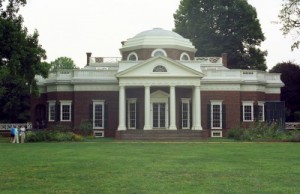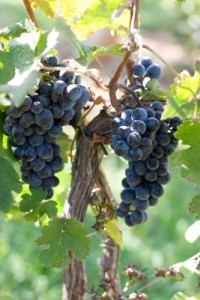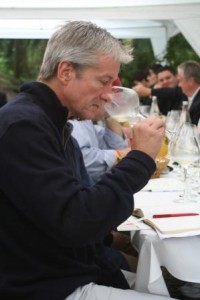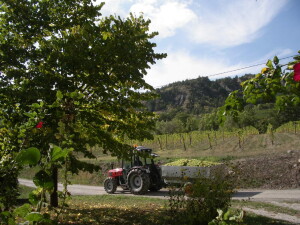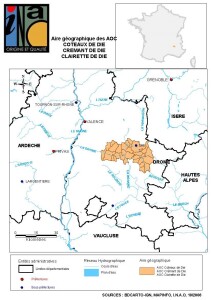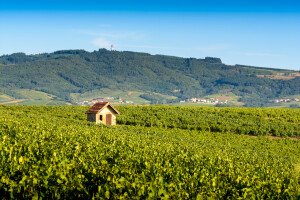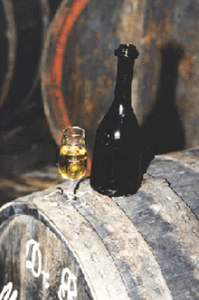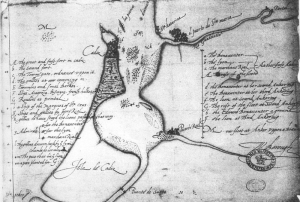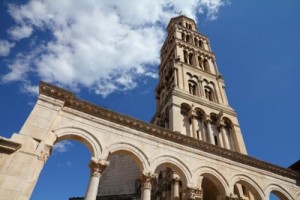 Prošek is a traditional wine made in the region of Dalmatia on the eastern coast of Croatia. The history of the wine in this region has been traced back as far as 305 AD, when the area was still part of the Roman Empire. In that year the Emperor Diocletian, weary and ill, became the only Roman Emperor to ever voluntary leave the position. He abdicated his throne and went to live in Dalmatia in the city of Split, where his ancient palace still stands. Written records tell us that Emperor Diocletian was a big fan of the sweet local wine, Prošek.
Prošek is a traditional wine made in the region of Dalmatia on the eastern coast of Croatia. The history of the wine in this region has been traced back as far as 305 AD, when the area was still part of the Roman Empire. In that year the Emperor Diocletian, weary and ill, became the only Roman Emperor to ever voluntary leave the position. He abdicated his throne and went to live in Dalmatia in the city of Split, where his ancient palace still stands. Written records tell us that Emperor Diocletian was a big fan of the sweet local wine, Prošek.
Prošek is still made throughout Dalmatia, both in the coastal areas and on many of the hundreds of islands that make up the region. The wine holds a traditional place in the family life of many Croatians, who make a batch of the wine when a child is born, and put the bottles away to be opened on the child’s wedding day.
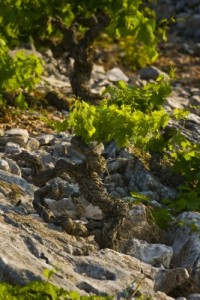 Prošek is a sweet wine made in the passito method. After harvest, the ripe grapes are spread out on straw mats and allowed to dry for several days to a few weeks, concentrating their sugar and flavors. The wine generally has 12% sugar and 15% alcohol. While there is no set formula for the wine, which is loosely regulated as a “specijalno vino” or specialty wine, typical grapes include the varieties Bogdanuša, Maraština, Grk, and Vugava, which are all native Croatian white grapes. Some versions, especially those considered to be the highest quality, use Plavac Mali in the blend. Due to its high sugar content and long aging tradition, the wine is often loosely compared to Vin Santo or Sherry.
Prošek is a sweet wine made in the passito method. After harvest, the ripe grapes are spread out on straw mats and allowed to dry for several days to a few weeks, concentrating their sugar and flavors. The wine generally has 12% sugar and 15% alcohol. While there is no set formula for the wine, which is loosely regulated as a “specijalno vino” or specialty wine, typical grapes include the varieties Bogdanuša, Maraština, Grk, and Vugava, which are all native Croatian white grapes. Some versions, especially those considered to be the highest quality, use Plavac Mali in the blend. Due to its high sugar content and long aging tradition, the wine is often loosely compared to Vin Santo or Sherry.
Croatia, after some tumultuous times in recent history, gained its independence in 1991 and is scheduled to become the 28th member of the European Union on July 1, 2013. While this certainly is considered progress in the positive sense, EU membership brings with it a host of regulations. Croatia currently has a system of regulating its wines, and classifies its wines as Vrhunsko Vino (premium quality wine), Kvalitetno Vino (quality wine), and Stolno Vino (table wine). These categories surely will undergo changes soon, as have the wine regulations of most EU members.
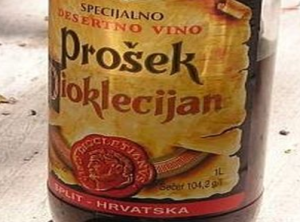 One facet of entry into the EU that might be a bit harder to love is the current EU quibble with the term “Prošek.” Being a wine enthusiast, one of the first things that most likely came to your mind upon reading this article was the similarity between the name “Prošek” and that of Italy’s popular bubbly, Prosecco.
One facet of entry into the EU that might be a bit harder to love is the current EU quibble with the term “Prošek.” Being a wine enthusiast, one of the first things that most likely came to your mind upon reading this article was the similarity between the name “Prošek” and that of Italy’s popular bubbly, Prosecco.
The name “Prosecco” has protected designation of origin (PDO) status and can only be used for wines from the desginated Prosecco region, so much so that the name of the main grape recently had to be changed from “Prosecco” to “Glera.”
While Prošek and Prosecco-the wines themselves-have little in common, one being a light, dry bubbly from Italy and the other being a sweet, passito, still wine from Croatia; the two words sound too close for comfort for the EU authorities, who have ruled that after July 1, the Croatian wine cannot be labeled using the term Prošek.
Croatia’s Ministry of Agriculture filed an application to protect the term Prošek, but the European Commission requested that it be withdrawn. For the time being, it is up to Croatia to get the ban lifted. Perhaps they can find a way to protect Prošek before it is too late. Best wishes to all involved…
Post written by Jane A. Nickles, CWE (your SWE Blog Administrator) bevspecialist@societyofwineeducators.org
